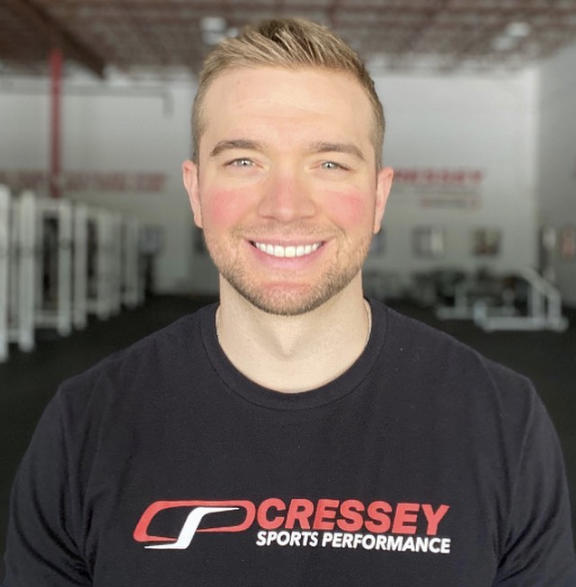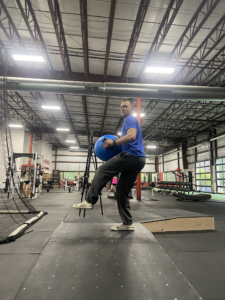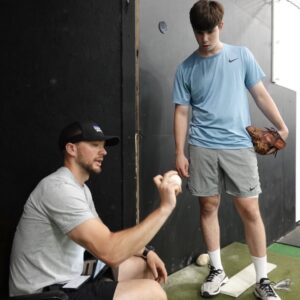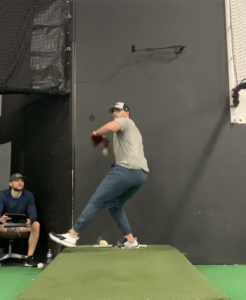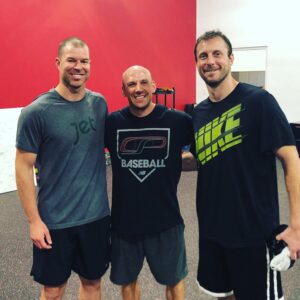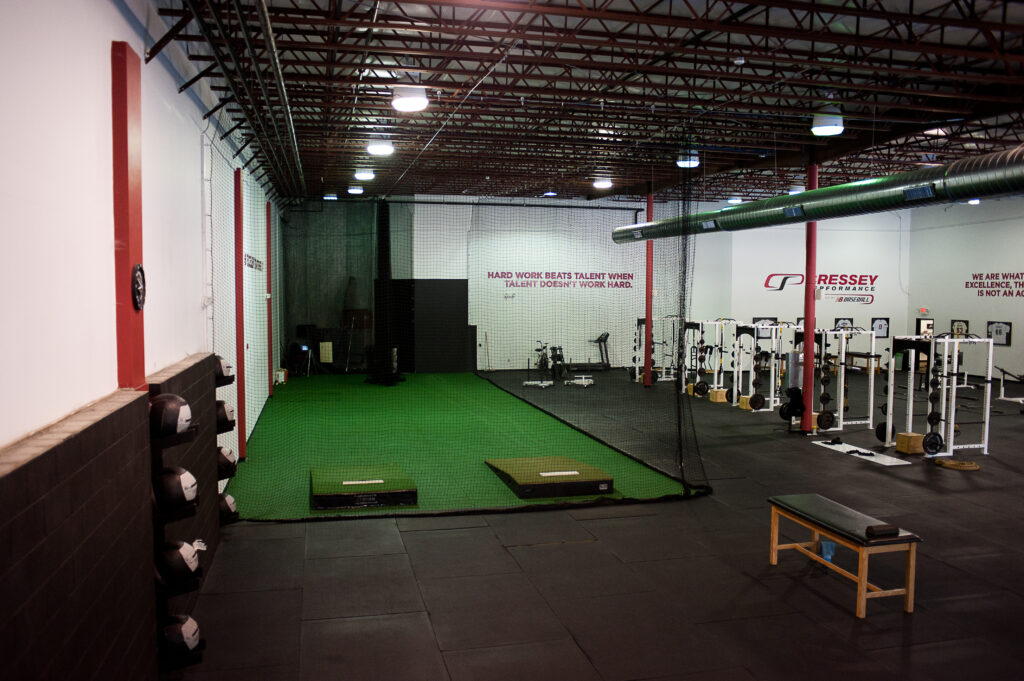
5 Key Traits of Successful Pitchers
Today’s guest post comes from Cressey Sports Performance – Massachusetts pitching coordinator, Jordan Kraus.
As we prepare for the 6th annual summer program here at CSP-MA, I find myself reflecting on the principles and traits we prioritize with respect to pitching development. Narrowing the focus on the essential qualities provides clarity for planning and simplifies the process for enhancing these characteristics that successful pitchers possess at the higher levels. Individuality is incredibly important, but the commonalities that exist among elite pitchers deserve the greatest investment of time and resources. The five components of high level pitchers highlighted in this discussion are:
1. Movement Efficiency
2. Outlier Characteristics
3. A Process-Driven Approach
4. Strong Mental Preparation
5. Authenticity
1. Movement Efficiency
The barrier to entry at each level of the game continues to climb as player development progresses and the talent level rises. The result is a requirement for even higher outputs and consistency in order to compete, which places a greater demand on movement efficiency. Movement efficiency is a popular term discussed in the baseball realm, but what does it really mean? Our ability to quantify movement continues to improve and helps to shape the definition, but essentially it comes down to movement that produces high outputs with high levels of consistency. We all have our perceptions on what we think efficient movement is, but the reality is perfect does not exist. There are trends that are widely agreed upon among high performers; however, our current ability to quantify movement does not provide a complete picture. Plenty of outliers exist that do not fall into the bandwidth of “efficiency,” yet they are succeeding at the highest levels. These outliers typically possess other unique or outlier characteristics and often offset a lack of efficiency in one area by being efficient everywhere else.
[bctt tweet=”Since perfect does not exist, optimal movement is what we strive to create. Finding optimal requires a thorough understanding of anatomy and preferred movement strategies, and this will vary for every athlete.”]
Appreciating how each body is designed to move and how it prefers to move through key positions is a much more effective strategy than isolating certain positions themselves. When an intervention is needed, there are countless ways to refine and enhance these movement strategies and a variety of tools to do so. This process typically starts by establishing movement competency as a prerequisite before picking up a baseball. After the baseline movement is sufficient, there are countless ways it can be progressed and challenged. The movement can be progressed by adding a dynamic component, challenging with perturbations, manipulating the environment and task, changing time pressure, and many more. Additionally, the movement can be challenged with medicine balls, waterballs, different types and weights of balls and implements, and an infinite number of other tools. Creativity can be useful, but there has to be transfer into catch play and ultimately to the mound where the carryover to performance matters.
There are many variables at play and movement changes need to consider the implications for health, velocity, execution, sequencing, pitch characteristics, deception and more. An alteration to one piece may lead to improvement on a biomechanical report, but if there are negative consequences elsewhere, the potential trade off needs to be carefully evaluated. Finding the optimal movement solution for each athlete is critical for performance, and a holistic view and consideration to all variables at play needs to be appreciated.
2. Outlier Characteristics
The ability to make hitters uncomfortable is a distinct quality among successful pitchers. There are a number of ways to accomplish this and being unique with outlier characteristics is a significant advantage. Essentially, pitchers want to develop outlier traits that lead to swings and misses. There’s a reason the phrase “dead zone fastball” (a fastball with equal vertical and horizontal movement) has some merit, and it’s because hitters love seeing what they see often, and they hate facing “different.”
The term, however, can be a bit overhyped, as there are plenty of pitchers having success with a fastball with a similar spin-axis and movement profile. However, the profile is typically paired with some other outlier characteristics, which can include a combination of velocity, spin, movement, release angles, approach angles, deception, execution, and elite secondary pitches. These are the critical desired traits that should be considered when evaluating a pitch and overall arsenal. Execution is included in this mix because there are pitchers having success at the big league level that may appear to have relatively average stuff, but their ability to execute is exceptional and becomes an outlier trait in itself. A reliance on sequencing and execution with relatively average stuff can work, but the margins for error are much smaller and highlights the distinct advantage that comes with outlier characteristics.
It’s important to note that considerations to health, previous performance, movement efficiency and all other variables need to be accounted for prior to the discussion of pitch characteristics. These variables, especially movement efficiency, have a strong influence on pitch characteristics and the resulting pitch shapes. In the previous example with an unremarkable fastball, if other unique traits with the pitch or complementary off-speed pitches aren’t present, there are a few avenues to consider.
As an obvious first, enhancing velocity will almost always improve the quality of the pitch. Velocity is a nuanced and lengthy discussion for another day, but it involves a combination of a number of variables, including adjustments to the throwing program, strength and conditioning program, recovery modalities, movement efficiency in the delivery, intent, and more.
A second potential solution to consider is adjusting the delivery to alter the release and spin-axis, but prior to considering this solution…
[bctt tweet=”It’s important to appreciate that trunk tilt dictates arm slot, and any attempt to change spin-axis via arm slot needs to maintain integrity with respect to the trunk and plane of rotation of the shoulders.”]
Another example, spin efficiency, is a common point of emphasis for players looking to improve the grade on their fastball, often chasing more induced vertical break. It could be as simple as grip and pressure change or cueing additional pronation, but it is often much more complex.
[bctt tweet=”Timing within the delivery will have a significant impact on how the hand works through the ball at release, and as a result influence the spin efficiency, axis, and movement of the pitch.”]
If timing within the delivery causes the arm and hand to carry in a linear fashion – rather than unwinding in a curvilinear nature that allows for proper timing of extension, internal rotation, and pronation – the result can be an increase in gyro degree.
Another example could be a pitcher with limited front hip internal rotation and a stride direction that carries them across their body. For some pitchers this could work, but with limited lead hip internal rotation there may be insufficient space to continue rotation around the front hip, which often results in a ball that is cut with lower spin efficiency.
To add further complexity, not all spin efficiency is created equal, and higher efficiency does not always result in a more effective pitch. Sometimes leaning into the gyro degree can create an outlier pitch potentially as a sinker using “seam shifted wake” or a fastball that has unique cut and ride. There are many causes to gyroscopic spin and many factors that influence all different pitch characteristics. These examples provide only a glimpse into the complexity that can be involved with designing an individual pitch and arsenal, and highlights the importance of maintaining a holistic approach that considers all variables.
3. A Process-Driven Approach
Time and energy are limited resources and appropriate allocation is important for long- term success. High-performers choose to invest them into the process, rather than wasting energy focusing on outcomes. Results matter, but they are inherently uncontrollable. The outcomes that we wish to control are the direct consequence of the processes and systems in place. A favorite quote of mine is, “We don’t rise to the level of our expectations; we fall to the level of our training.” Essentially, the level of preparation and the level of success will eventually meet. This especially holds truth in a game like baseball: a long season with plenty of time for things even out. This process will have some individual variance, but quality preparation requires attention to a few fundamental areas.
Continuity and alignment of these fundamental areas within the process are critical components that need to be appreciated. The end goal is to improve performance on the mound in a game environment, not to become a weight room or bullpen hero. To this end, we’ve always taken great pride at CSP in the synergy among the throwing program, strength and conditioning program, physical therapy, manual therapy, recovery modalities, and mental performance training.
Each of these elements should be used as tools to support performance and should be prioritized based on a thorough assessment. The assessment process is a key driver behind decisions made and typically includes a discussion on training history, routines, injury history, movement screens, video breakdown, and an assessment of pitch characteristic data and sequencing. Each component needs to consider the individual needs and goals obtained from the assessment from an integrated viewpoint, as well as the time of year. There are similarities, but an in-season program might look vastly different than during the off-season or our 10-week college development program. It’s important to also remember that even the best program can be derailed by outside variables such as sleep, nutrition, hydration, and other outside stressors. These variables have an enormous impact on the efficacy of a program and need to be considered as part of the overall process.
Each component of the process could be an entirely separate post, but it’s important to appreciate what a quality throwing session within a throwing program looks like. Whether it’s a physical movement adaptation or a change geared more toward approach, execution, or a pitch characteristic, there needs to be a goal for each session. Going through the motions of a throwing session with no real intention is a recipe for mediocrity. For example, if a certain movement adjustment is the goal, the warm-up and pre-throwing choices should help facilitate that specific adjustment. Again, the objective is to transfer the movement or feeling into catchplay with a baseball in hand, and then to the mound. The same adaptation can be layered through the other areas of development, which ties in the importance of collaboration between departments during the training process. These decisions need to also consider principles of skill-acquisition and individual learning styles in order to maximize the efficiency of each session.
The training environment is an often overlooked component of this process. It may seem obsolete, but it can have a considerable impact on the development process by enhancing intensity, motivation, accountability and consistency. Learning from peers can be just as impactful as a coach, maybe even more if you surround yourself with the right people. Plus, there’s something different about training alongside other people on the same mission with similar goals, so being selective with the environment can be an added bonus to a training program.
4. Strong Mental Preparation
At each increasing level of the game, the gap in talent continues to narrow. The result is often a shift in priority and value from physical tools to intangibles. The mind becomes a key differentiator and it plays a pivotal role in success or failure on the field. Preparation – both physical and mental – is the foundation to building a strong mindset. This means adhering to the previous process driven approach and developing a physical and mental routine for pregame, pre-pitch, and mid-game adjustments. As with physical preparation, there is considerable variance and individuality when it comes to different mental strategies, routines, and characteristics. There isn’t a single solution; rather, the goal is to develop effective strategies that prepare you for each competition, each pitch, and a strategy for righting the ship when things go south. While appreciating individuality and variance within mental strategies is important, there are similar qualities among elite level pitchers.
[bctt tweet=”Watching a MLB veteran and a high schooler play catch are very different things. The focus and attention to detail must improve with each increasing level of the game, and a pitcher’s mentality must progress to support these key habits.”]
A few additional critical attributes for high performing pitchers are confidence, conviction and resiliency. The three of these are grouped together because there is a distinct relationship between them. Accountability to your own process and true belief in your preparation prior to stepping on the field is where confidence starts. It stems from an innate belief in yourself and a combination of previous success and preparation. If there is trust in the process and preparation, then stepping onto the field with confidence becomes automatic.
That same confidence in knowing that you are prepared leads to an increased belief in your stuff and your ability to execute. If there’s confidence in your stuff and ability to execute, then throwing a pitch with conviction becomes unconscious. Conviction is one of those things that’s essentially impossible to quantify, yet it plays a pivotal role to the success of a pitch. If you don’t believe you can compete, or believe the pitch you are throwing will succeed, more times than not, it won’t. The level of preparation and confidence lay the foundation for handling adversity. If you’ve overcome adversity and have proven to yourself and trust your ability to do so, toughness and resilience become second nature. Knowing and believing that you can and will overcome adversity feeds back into a further level of confidence and conviction, and it becomes a cycle. An unwavering mentality can be built through an effective process, and these intangibles are key to success at the highest level where the gap in talent is miniscule.
5. Authenticity
Every pitcher has an individual skill-set that comes with certain strengths and weaknesses. An understanding of what makes you successful and relentlessly adhering to those strengths is an overriding principle among high-performers. Being openminded and willing to try new things to improve is absolutely important to the process; however, it should be used as a complementary piece to enhance the core of what already makes you successful. A continuous cycle of too many new variables without a foundation to build around inhibits the establishment of a true identity. This principle of authenticity ties in the previous four components into one fundamental trait: be yourself.
To start, an understanding of your own delivery and physical limitations can help to understand how you move, where your delivery breaks down, and what your body needs to perform optimally. This knowledge accelerates readiness as well as your ability to make adjustments, both in game and between outings.
Next, a comprehensive understanding of your pitch arsenal and its strengths and weaknesses can simplify your approach and lead to higher execution. Simply put, use your unique traits and best pitches to create swings and misses and get outs, while avoiding getting beat with your worst pitches or by trying to get cute.
[bctt tweet=”It’s easy to get caught up in scouting reports and relying only on attacking weaknesses. Finding holes in your opponent is a part of the process, but it’s equally or more important to double-down on your strengths and what you do well.”]
Understanding your own process and what your body and mind need to prepare lead to confidence and conviction on the mound. Consistency in the routine facilitates a feeling of preparedness and allows for a shift into the appropriate mindset required for high performance. Taking ownership for this process and combining these components can help you find the best authentic version of yourself. A good coach will help guide players down a path of self-exploration, but the best pitchers are accountable for their own process, preparation and performance.
A couple of Cy Young Award winners and CSP athletes, Max Scherzer and Corey Kluber, both provide great examples of authenticity. Each has a unique delivery, different set of elite pitch characteristics, different processes to prepare, and are renowned for essentially opposite mentalities on the mound. Both are incredible talents, but if one tried to be like the other, the results would likely be different. At the end of the day, the pitchers who understand who they are and don’t try to be anybody but the best version of themselves have significantly more success.
While there are a number of important qualities to consider when it comes to successful pitchers, the previous five consistently emerge among the game’s top performers. The process of development requires a comprehensive approach that understands quality movement, effective pitch characteristics, efficient and synergistic processes and routines, and the mental capacity to support them. An integration of these qualities with a pitcher that remains authentic and true to himself is a dynamic recipe for success. The development process truly requires a holistic approach with clearly defined end goals to enhance the processes that facilitate improved performance on the mound.
If you’re looking to experience how we work to develop all these traits, be sure to check out the CSP Elite Collegiate Summer Development Program. This will be our sixth summer of running the program, and the average velocity increase over the course of the ten-week program is >4mph. Previous participants have not only been draft picks, but are now pitching in the big leagues. You can learn more HERE.
About the Author
Jordan Kraus serves as a Pitching Coordinator at Cressey Sports Performance-MA. You can follow him on Twitter at @_JordanKraus_ or Instagram at @CSPPitching, or email him at JordanRKraus@gmail.com.

